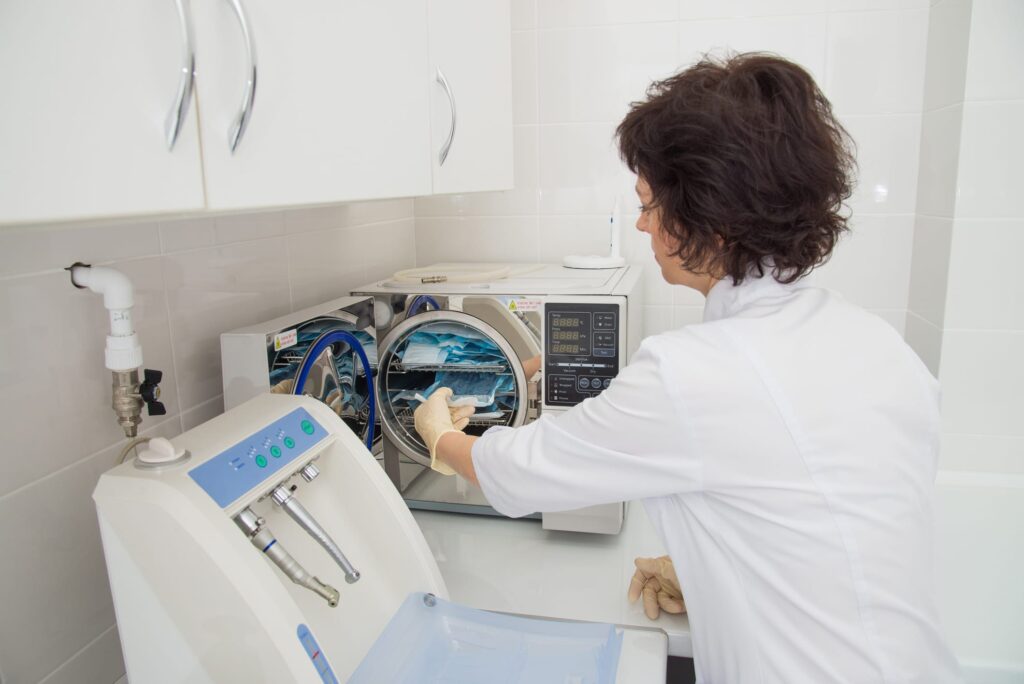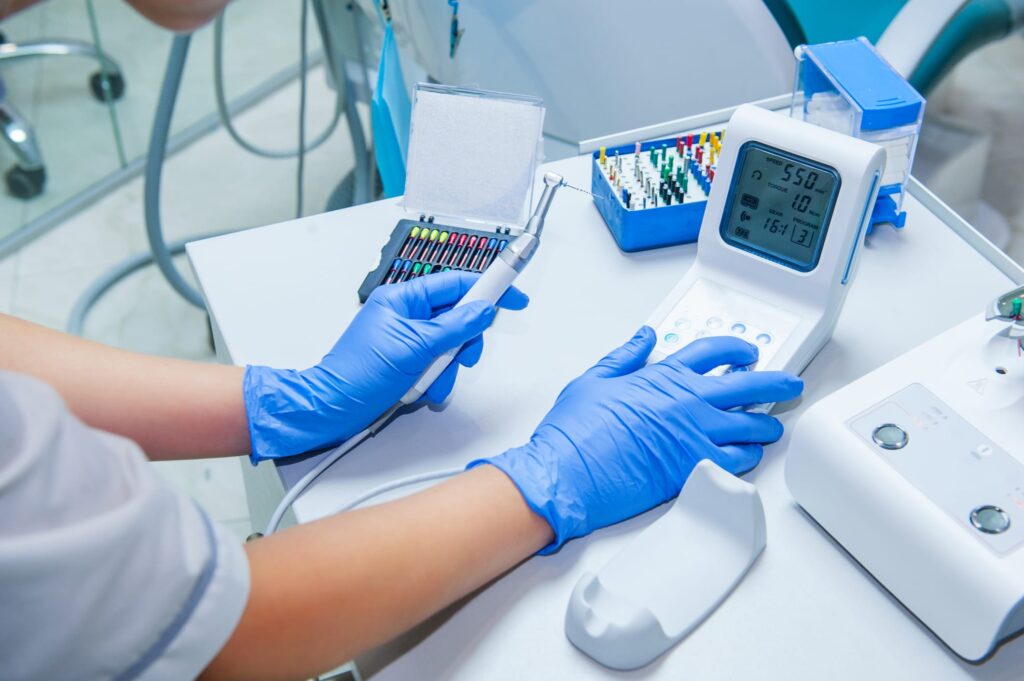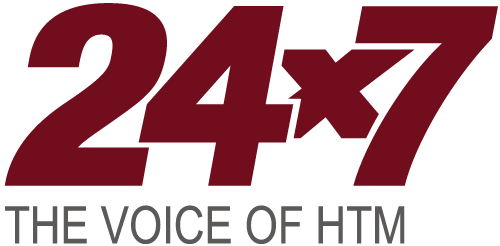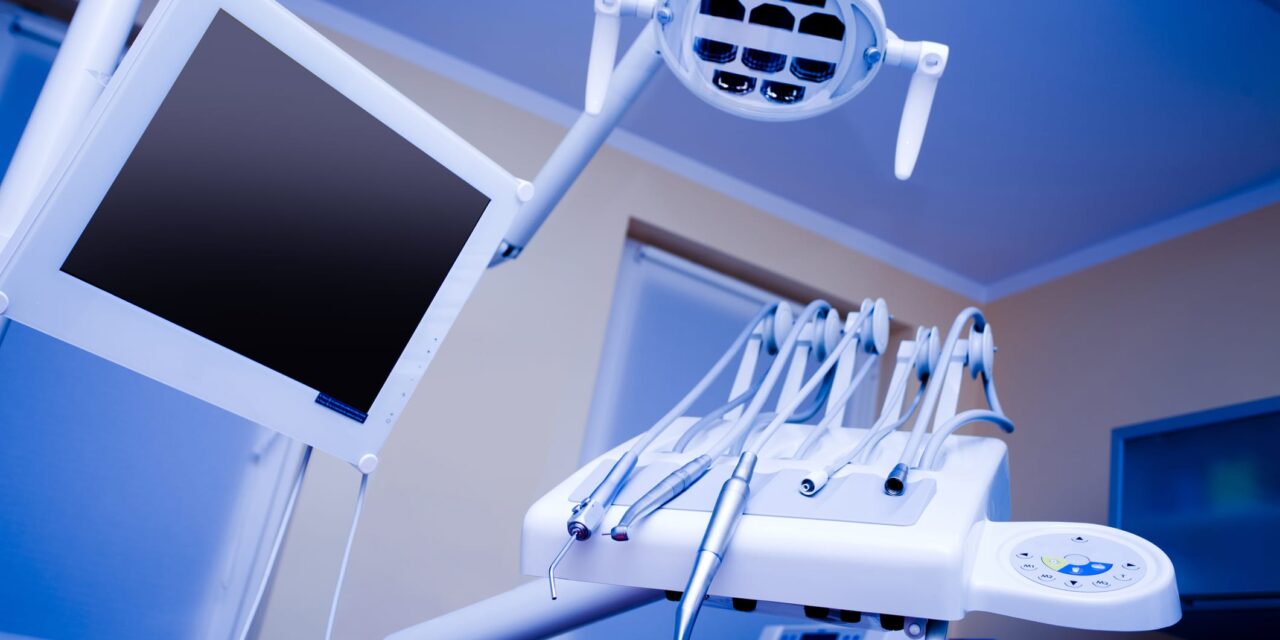A new accredited program is addressing the lack of formal training in dental equipment repair and bringing the field closer to HTM.
By Alyx Arnett
In most dental clinics, when a compressor fails or an autoclave malfunctions, there’s no repair technician stationed just down the hall. Instead, dentists often face long waits for overbooked techs.
With more than 200,000 practicing dentists in the United States and only about 3,200 dental equipment repair technicians,1 the math doesn’t add up, says Darrine Miller, vice president of operations at UptimeServices, a provider of tools and training for healthcare facilities. “You can have all the dentists you want, but if their equipment doesn’t work, patients go unseen,” Miller says. “And that is the conundrum this country is in right now, without anyone really knowing it.”
Even when a technician is available, Miller says, formal training is often lacking—because it hasn’t existed. Military programs once filled that gap, but most have been phased out. In the absence of standardized education, technicians typically learn on the job, making it harder to ensure consistency and harder still to attract new talent to the field.
That’s now changing. UptimeServices and the College of Biomedical Equipment Technology (CBET) have launched the country’s first accredited dental equipment repair technician program. The goal: to formalize training, grow the technician pipeline, and better integrate dental technology into the healthcare technology management (HTM) fold.
A Hidden Crisis in Dental Equipment Servicing
Despite overlaps in equipment between dental and medical fields, the two have long operated in separate silos. Dental devices like sterilizers, imaging systems, and compressors fall squarely into the category of medical equipment—but in dental settings, they’ve often fallen outside the scope of HTM.
That divide extends to regulation. Hospitals are subject to oversight by the Centers for Medicare & Medicaid Services, with accrediting bodies like the Joint Commission and DNV enforcing strict protocols for equipment maintenance and safety. But about 80% of dentists practice in outpatient clinics and are not subject to those same requirements.2 As a result, dental equipment is often serviced without the documentation, performance checks, or safety inspections that are standard in hospitals.
“The equipment that’s in those offices all needs to be maintained just like a traditional healthcare facility,” says Richard “Monty” Gonzales, president of CBET.
But in practice, that often doesn’t happen. Instead of preventive maintenance, many clinics follow a fix-it-when-it-breaks model. “[A dentist] buys an autoclave. He puts it on the counter, and he uses it until it breaks,” says Matt Lau, senior manager of technician education at UptimeServices. “They’re doing spore tests, but nobody’s coming in to calibrate this thing ever.”
Even basic safety protocols can fall through the cracks. Lau says many dental offices don’t fully understand what an electrical safety check is or why it’s important. “It’s absolutely foreign to them,” says Lau, who helped develop the training curriculum for the new dental equipment repair technician program.
In some cases, even identifying broken equipment can be a challenge. “There’s a lot of confusion where [a technician will] get a call for a compressor, when it’s actually suction,” says Danielle McGeary, vice president of HTM at the Association for the Advancement of Medical Instrumentation (AAMI). “They come in with parts and tools to fix one thing, when it’s the other.”
These kinds of operational blind spots all trace back to a common cause: the lack of standardized education and training in dental equipment servicing.
The Fix: A First-of-Its-Kind Training Program
To fill that gap, the dental equipment repair technician program offers a dedicated pathway tailored to the needs of dental practices.
The primary offering is a 24-credit-hour certificate program composed of eight online courses. Three are dental-specific—covering the dental environment, dental utilities and support systems, and dental delivery systems. The other five build core technical skills: electronics, measurement and testing, troubleshooting, professional development, and safety procedures.
A second, three-phase pathway, offered through CBET’s business training arm, focuses solely on the dental-specific courses. The first phase—the dental environment—is entirely online, while the latter two—dental utilities and support systems, and dental delivery systems—follow a hybrid format: six weeks of virtual instruction followed by one week of hands-on lab training at CBET’s San Antonio, Texas, facility.
During the hands-on portion, students train on equipment in mock dental clinic zones. The utility room features compressors, vacuum pumps, water filtration systems, and amalgam separators. The operatory includes dental chairs, delivery units, lights, and imaging devices, along with smaller tools such as handpieces, curing lights, and ultrasonic scalers. In the sterilization area, students learn to operate autoclaves, ultrasonic cleaners, and other devices essential to instrument reprocessing.

ID 93068448 © Truecash2k8 | Dreamstime.com
One highlight of the program, Miller says, is that it doesn’t just teach students how to fix equipment. It also teaches them how dental clinics actually work, walking students through the day-to-day operations of a clinic, introducing them to the roles of various dental specialists, the flow of patient care, and the interpersonal dynamics they’ll encounter on the job. “In the dental world, dentists have an intimate relationship with their equipment because they actually physically own it, and they physically use it on all their patients, which is drastically different from the medical side of the business,” she says.
Themes like safety, documentation, and compliance run throughout. “It’s really bringing that HTM thinking into this area and making sure folks are properly trained to maintain all the equipment and understand all the equipment,” says McGeary.
She adds that some devices like X-ray systems carry serious risks if handled improperly. “You need to be properly shielded. You can get hurt if you open up an X-ray without properly powering it down,” she says. “So there are a lot of safety concerns, too. It is really essential to ensure that these folks are very well trained before working on this equipment.”
Who It’s For: New Entrants and Current Biomeds
The dental equipment repair technician program offers a structured path into the field for those just starting out, as well as a way for current HTM professionals to broaden their skillset.
For newcomers, “This might be the thing that they’ve always wanted to do, but they just didn’t know it because they didn’t know it existed,” says Miller.
To help establish the field as a recognized and viable career path, the program’s organizers are collaborating with organizations such as the HOSA (formerly Health Occupations Students of America) and the American Healthcare Apprenticeships (AHA). HOSA, recognized by the US Department of Education and the Department of Health and Human Services, is introducing dental repair to its network of more than 300,000 health-focused students nationwide. At the same time, AHA has created a program to help educate students and workforce commissions that dental equipment repair is a profession. AHA is also establishing pre-apprenticeship and apprenticeship pathways.

For those already working in HTM, the new program provides an opportunity to expand their skillset. As more hospitals and clinics incorporate dental services, HTM professionals are encountering equipment that falls outside their traditional training. “Some of the equipment that is in front of them now is dental, and they typically avoid it because they don’t have that experience,” Miller says.
Formal training can not only expand a technician’s capabilities, but it can also open new revenue streams for HTM departments by filling scheduling gaps with dental service calls. And for some, it may offer the chance to branch out on their own. “I view it as an expansion of what biomed techs are doing now but with new product lines, different types of equipment, and different environments,” says Gonzales.
Industry Backing: Manufacturers Step In
The program has garnered support from dental manufacturers like MGF Compressors, MARS Bio-Med, A-dec Dental Equipment, and DENTALEZ, which are contributing equipment and investing in technician education.
MGF Compressors, which manufactures compressed air systems for dental practices, donated compressors for students to use in CBET’s San Antonio lab. “The students can tear apart and put [the compressors] back together so they get comfortable with working on compressors,” says David Solomon, senior sales consultant for MGF Compressors.
Rouman Atanason, who runs MGF Compressors’ United States distribution warehouse, sees the program as an opportunity to ensure future technicians are better trained—especially amid a shrinking workforce. “In the last five, six years, we’ve seen a shortage where the old technicians were going, and the new ones coming in just didn’t have the knowledge on how to work on the equipment,” says Atanason.
While original equipment manufacturer training remains valuable, Solomon says it’s more about “putting out the fire.” The national curriculum fills a broader gap. “My hope and aspiration would be that the school…teaches them about the full system so that they understand the differences between different compressors—how they should be sized, what needs need to be met—so that they could walk into any environment and understand what they’re looking at,” he says.
MARS Bio-Med, a Canadian manufacturer specializing in mercury filtration and environmental safety, is supporting the program with both equipment donations and financial aid. The company has committed $25,000 in scholarship funding for 2025—which CBET has matched—and plans to double that amount in 2026 and 2027. The 2025 amount will fund 10 scholarships at $5,000 per student.
President Stu Sinukoff says a recognition of unmet need drives the company’s involvement. “There’s a big need for technicians to work on and fix the equipment that’s out there that really isn’t working,” he says. He also points to financial barriers that can keep aspiring students from participating. “There are people out there who don’t have a laptop, who can’t take the course,” he adds. “There are people in need everywhere, and that’s what MARS Bio-Med is about—helping people.”
The Road Ahead: Certification, Growth, and Industry Change
The dental equipment repair technician program, stakeholders say, could catalyze a broader shift toward professionalization, standardization, and recognition of dental service within the HTM field.
According to UptimeServices’ Lau, the program has the potential to elevate the status of dental technicians. “Us creating this accredited program where somebody can say they are certified on dental equipment…is going to bring a little more status to the dental industry,” he says.
Lau also sees opportunity for experienced HTM professionals to improve technical support in dental settings, where devices like blood pressure monitors are common but often go unserviced due to limited training. “The dentist is going to win because now we’re giving them a technician who actually knows what a physiological monitor is and knows how to repair it,” says Lau.
AAMI’s McGeary says the program supports broader efforts to bring dental equipment service into the HTM fold—including AAMI’s work with the American Dental Association to develop ST113, a standard focused on steam sterilization and sterility assurance in small dental clinics. While the existing American National Standards Institute/AAMI ST79 standard for steam sterilization in healthcare facilities is technically applicable to dental settings, much of its content is geared toward large, hospital-based facilities, says Amanda Benedict, AAMI’s vice president of sterilization. “We believe that this new standard will be an invaluable resource for professionals providing sterile processing at dental practices of all sizes and will support dental patient safety,” Benedict says.
As part of its efforts to support this sector, AAMI is also deepening its collaboration with UptimeHealth, the parent company of UptimeServices. In 2026, UptimeHealth’s Dental Fix Summit will be integrated into AAMI eXchange.
For Gonzales, the long-term vision is clear: Dental servicing should be treated as an essential part of HTM. “As we think about a dental office and dentists working on your mouth, that’s an important part of your overall healthcare,” he says. “So we should look at it the same way, through that same lens.”
ID 24121262 @ BrunoWeltmann | Dreamstime.com
References:
- American Dental Association. US Dentist Demographics Dashboard. Available at: https://www.ada.org/resources/research/health-policy-institute/us-dentist-demographics
- Vujicic M. American Dental Association Health Policy Institute. The Evolving Dental Practice Model: Data Update for 2023 on Practice Size and DSO Affiliation. Chicago. American Dental Association; 2024. Available at: https://www.ada.org/-/media/project/ada-organization/ada/ada-org/files/resources/research/hpi/hpi_evolving_dental_practice_model_2023.pdf?rev=897fa6b028054de1970f70334a3c47aa&hash=8A609BED936215ADDF0762956FE063B4




